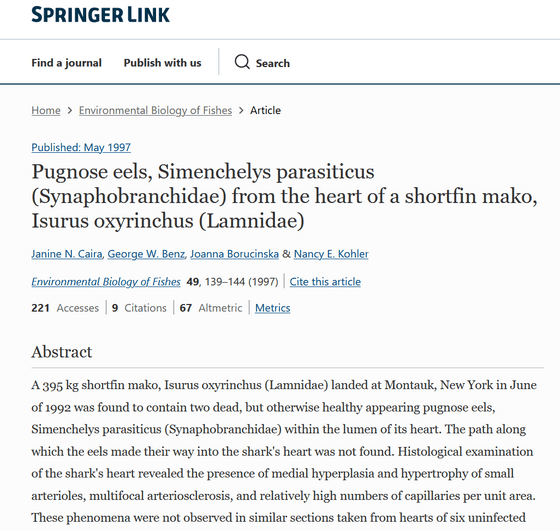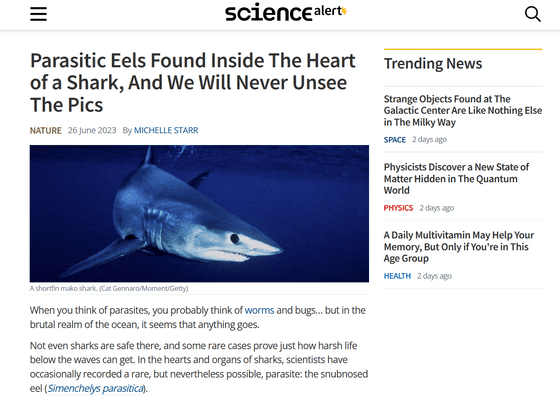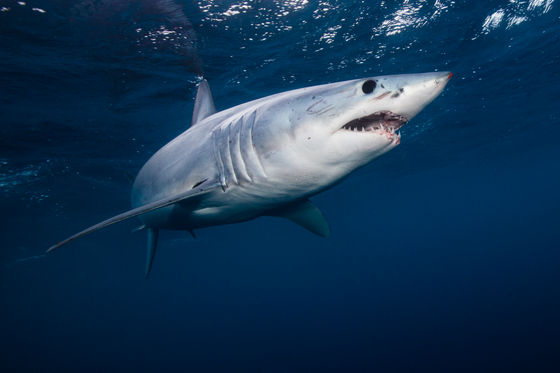A rare case in which two 'macaw conger' with a length of over 20 cm dive into the heart of a shark

Many people think of small nematodes and small fish when they think of parasites hidden in the bodies of sea animals. But in 1992, two macaws were found in the heart of a dead shark that was landed ashore. Although the macaw was dead when it was discovered, it is reported that it may have been alive for some time, as shark blood was detected in its stomach.
Pugnose eels, Simenchelys parasiticus (Synaphobranchidae) from the heart of a shortfin mako, Isurus oxyrinchus (Lamnidae) | SpringerLink

Parasitic Eels Found Inside The Heart of a Shark, And We Will Never Unsee The Pics : ScienceAlert

Below is a photo of a macaw found in the heart of a 395kg mako shark that was landed in Montauk, New York in June 1992. Click to see a larger image without the mosaic.

Scarlet eels are carrion-eating deep-sea fish that live mainly near the seafloor by scavenging for marine animal carcasses and prefer to burrow into the flesh of large fish.
The shark that had this macaroni lurking in its body had sunk to the seafloor with a 'fal hook', a hook caught somewhere other than its mouth, and was dead when it was carried on board. It was then transported in a cold room and dissected by oceanographers to determine the cause of death. At this time, it was the conger eel that I mentioned at the beginning that was found inside the heart.
Although it is a dead shark, it is said that this is the first case in which macaw eels were parasitic in the body of a shark. The two macaw eels were juvenile females, 21 cm and 24 cm in length, which appeared healthy except that they had died from being refrigerated. What's more, they found evidence that it lived inside the shark's heart for some time.
In a 1997 paper, the researchers who reported on the case wrote, ``The stomachs of two macaws were filled with blood, suggesting that they had been inside the shark at least long enough to feed. The blood in the stomachs of the macaws was coagulated, and no intestinal contents, i.e., digested food or parasites, were found in either macaw.'

Also, the shark's heart had damage not seen in sharks without macaws, but strangely no traces were found like the macaws do when their hearts are ripped open. From this, the research team believes that the macaw may have found a dead or weakened shark with a fishing hook and invaded the body through gills.
'Just before or after death, two macaws discovered the shark and pierced its gills or throat to enter the circulatory system and reach the heart. I ingested blood.'
Cases in which creatures temporarily live a parasitic life, such as the macaw eel this time, are called 'conditional parasitism'. The ability to parasitize other creatures even for a short period of time may have important implications for unraveling the evolution of ``obligate parasitism'' animals that need to parasitize to live, a scientific news site said ScienceAlert.
Related Posts:







